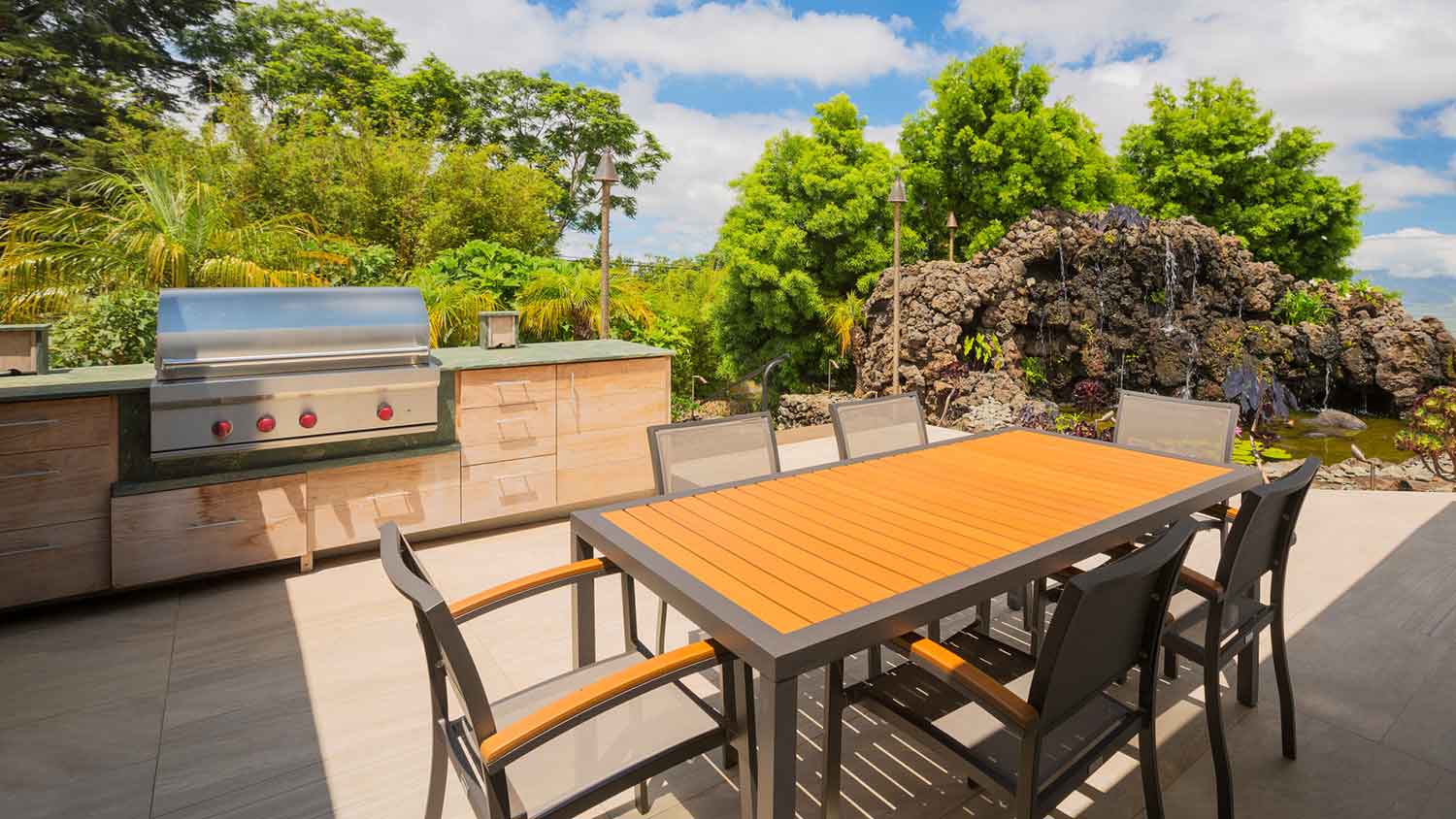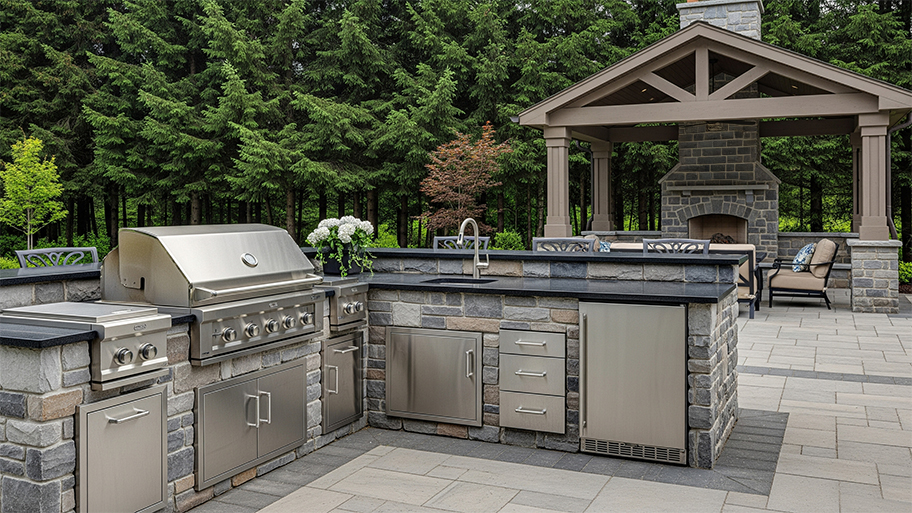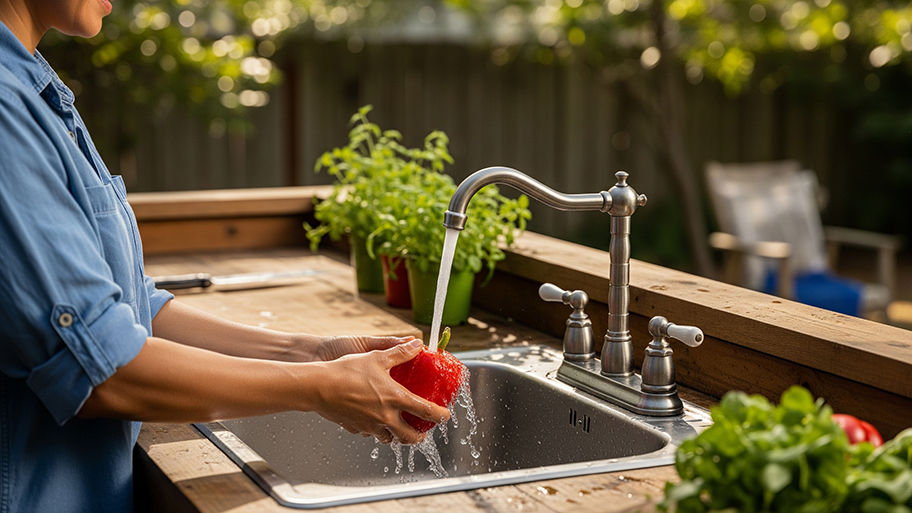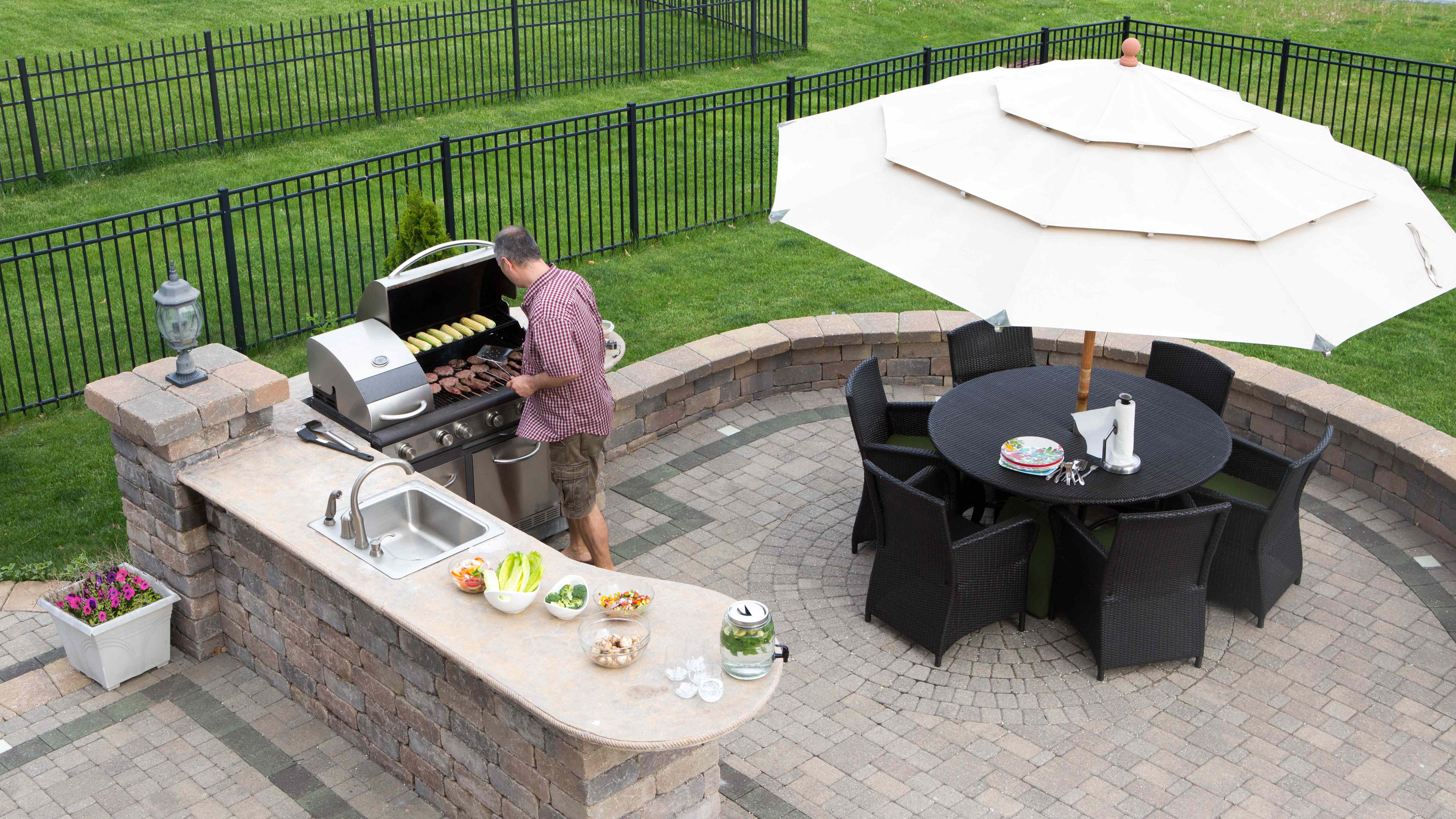
How much does it cost to install a new outdoor water spigot? From faucet style to complexity, find out how much you’ll pay for this home improvement project.
Summer kitchens add value to your home and a unique space to cook and socialize


Summer kitchens are outdoor spaces to cook that often feature a bar fridge, counters, and comfortable seating
Choosing the grill is a great place to start when building a summer kitchen
Summer kitchens vary in price, but the average cost is $15,500
A summer kitchen is a small outdoor structure that’s separate from but nearby the house and was traditionally used for cooking during the hot and muggy parts of the year. They arose in the late 18th century, long before the days of range hoods, smoke alarms, and air conditioning, to keep the house cool and safe from a potential fire.
Summer kitchens remained popular throughout the 19th century in certain areas, particularly in upstate New York, New England, and the Mid-Atlantic. You might still come across these tiny structures when driving through the East Coast countryside or perusing listings for older houses.
If you’re considering installing a summer kitchen in your home, this guide breaks down everything you need to know, including pros and cons, possible layouts, price estimates, and more.
Traditional summer kitchens—which were external buildings about the size of a shed—were outdated by the 20th century, but there are many modern takes on the idea. Most commonly, they come in the form of outdoor kitchens: open-air spaces meant for cooking, socializing, and relaxing. Picture a cozy back patio with a functional kitchen setup.

The outdoor kitchens we have today provide some of the same advantages as old-school summer kitchens, along with several new ones. They keep houses cooler, which has a possible dual benefit of making you more comfortable while lowering the electric bill as your AC won’t have to run as much. Cooking outside also prevents the smell of dinner from lingering inside the home.
One long-term benefit of an outdoor kitchen is that it can increase the value of your house. You’ll want to estimate the cost to build an outdoor kitchen before banking on home value as justification, though. Finally, an outdoor kitchen creates a unique place to spend time with others, whether in the sunshine or at night under the stars.

Adding an outdoor kitchen to your home can range widely in scope and price. There are low-budget DIY layouts—cost cutting is especially possible if you already have a patio—to lavish models that surpass many indoor kitchens.
The first piece you’ll want to sort out, and truly the only essential one, is a cooking appliance. This usually means a gas grill—a classic method for summertime cooking. Instead of wheeling a separate grill into your outdoor kitchen, you may want to purchase a grill island, wherein the grill is built into a countertop. It’s more aesthetic and adds room for food prep. Some grill islands also come with appliances you might want to purchase anyway, like a sink or mini fridge.
There are plenty of other cooking appliances to think about too, mainly as ways to complement your grill. Popular options include griddle ovens, stovetop burners, and smokers. Many people also purchase or build an outdoor pizza oven.
Once all the cooking is done, it’s time to hang out, so focusing on the comfort of your outdoor kitchen is a terrific way to upgrade it. An outdoor dining table is the best way to accommodate a large number of family and friends, but even a small patio table will help you enjoy the space.A bar makes for a great place to socialize as well and is generally simple to create by extending the countertop around the grill. The biggest question is how much room you have in your yard and what shape you want your outdoor kitchen to have. If a bar fits your vision, a mini fridge will certainly come in handy, too.
To complete an outdoor kitchen, some comfortable patio chairs, possibly placed around a fire pit, are a great way to unwind when the day is done.
When your vision is complete, connect with a local outdoor kitchen builder to bring it to life.
From average costs to expert advice, get all the answers you need to get your job done.

How much does it cost to install a new outdoor water spigot? From faucet style to complexity, find out how much you’ll pay for this home improvement project.

The average cost to build an outdoor kitchen varies depending on the materials, design, and complexity of the project. Find out other cost factors in this article.

Discover the cost to build an outdoor pizza oven, including average prices, key cost factors, and tips to help you plan your project and budget wisely.

Learn how to install an outdoor sink and make your outdoors even more of an extension of your indoors–follow these step-by-step instructions to DIY.

An outdoor kitchen can add significant value to your home. Learn about standard outdoor kitchen dimensions and how to choose the right size.